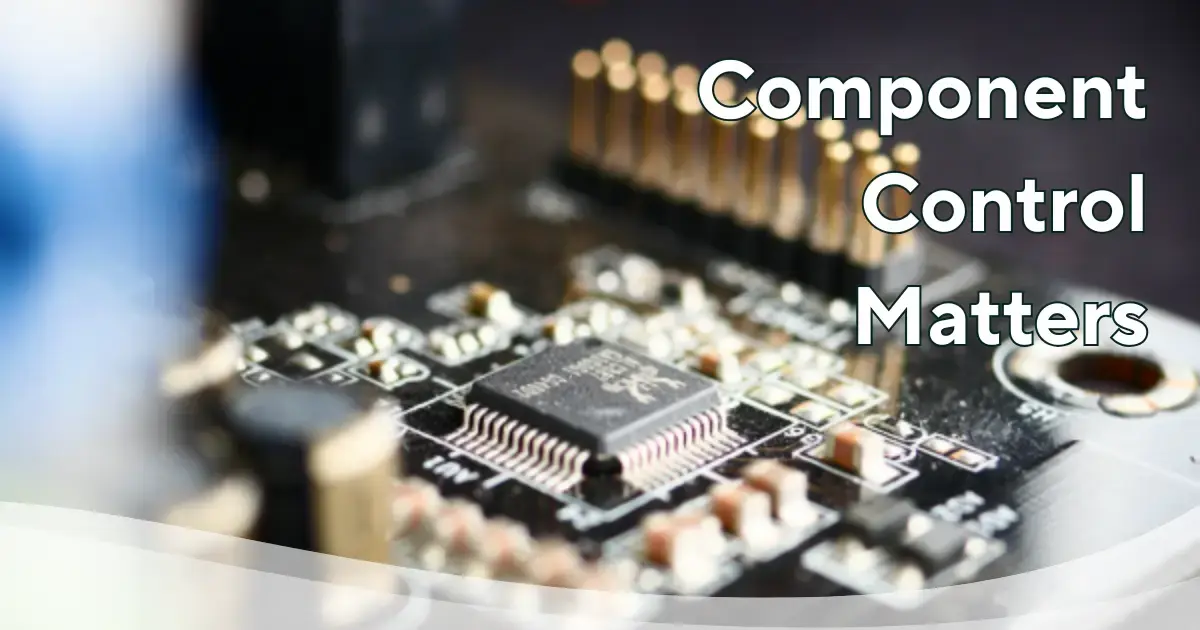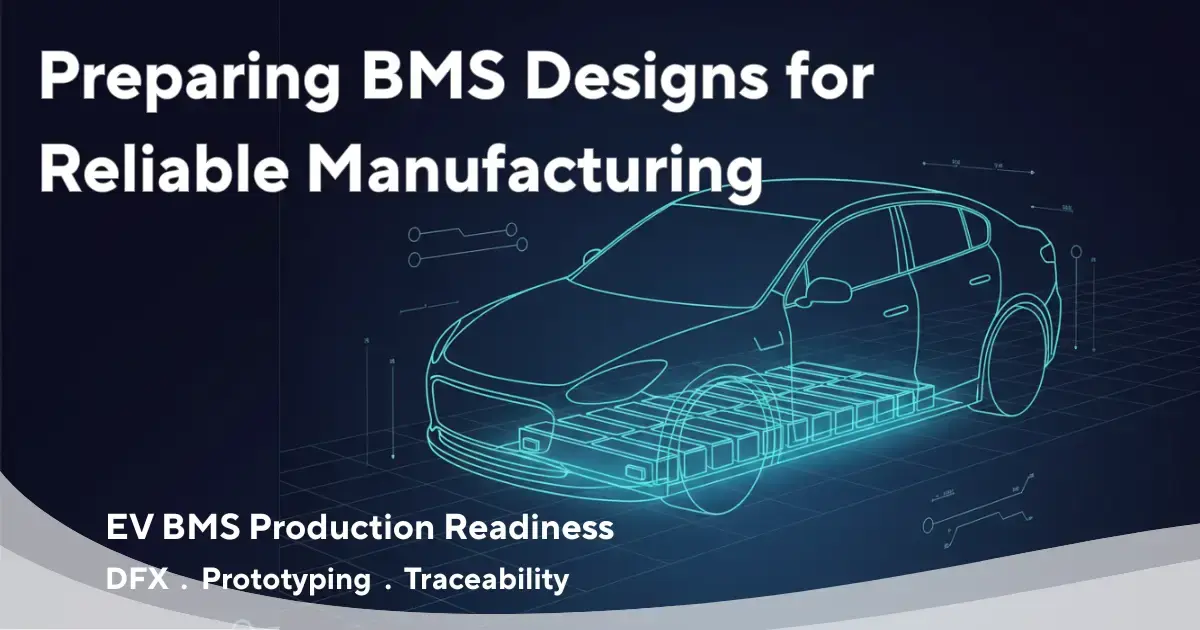/how-to-enhance-global-supply-chain-resilience-6703e4089c341.webp)
Enhance Global Supply Chain Resilience with Vertical Integration | SVI
Optimizing supply chains is an ongoing problem for Original Equipment Manufacturers (OEMs) in the electronics sector. Between grappling with multiple suppliers across supply chain steps to mitigating risks from external disruptions and vulnerabilities, it's no surprise that 73% of supply chain managers feel pressure to improve and expand their capabilities. A vertically integrated supply chain may be the answer.
Vertical integration streamlines the supply chain and enhances its resilience, leading to greater visibility, improved predictability, increased product quality, and overall cost efficiency. By partnering with a vertically integrated EMS provider with digitally enabled supply chain management capabilities, OEMs can achieve optimal global supply chain resilience, preparing them for future demands and market changes while tapping into the advantages of advanced supply chain technology.
Common global supply chain vulnerabilities
OEMs are exposed to a myriad of vulnerabilities that can disrupt operations and impact business continuity. One of the most significant risks is the heavy reliance on multiple external suppliers throughout the production line, which often results in a lack of control over more than a few critical parts of the supply chain.
This dependence can be particularly problematic during geopolitical tensions or economic instability when supply lines can be unexpectedly cut off, leading to critical shortages and halted production. Recent European conflicts have resulted in supply chain issues like these arising, with the impact keenly felt worldwide.
Additionally, logistical disruptions caused by port delays, transportation strikes, natural disasters and increased import taxes can further exacerbate these challenges, underscoring the fragile nature of extended and complex global supply networks. A recent example of this was the sharp hike in US tariffs for Chinese imports—a key region for manufacturers operating in the US market now facing increased supply chain complications.
Moreover, intricate supply chains with multiple suppliers and stakeholders can also threaten product quality, leading to product recalls, reputational damage, and loss of customer trust. Managing supplier relationships, ensuring optimal communication, and controlling costs can be especially challenging for supply chain resilience when several third parties are involved. This can severely impact OEMs' scalability, capacity, and compliance.
The mechanics of a vertically integrated supply chain
A vertically integrated supply chain, as facilitated by an end-to-end EMS partner, involves comprehensive control of multiple stages of the production process, from raw materials to final product distribution. This model consolidates global supply chain management under one umbrella, significantly enhancing the efficiency and reliability of production. Here's an outline of what a vertically integrated supply chain looks like:
Backward integration: This aspect of vertical integration involves controlling upstream processes such as sourcing raw materials and components. By owning or having exclusive contracts with raw material suppliers, the EMS provider ensures a steady and controlled supply of essential inputs. This is crucial for industries like MedTech and automotive, where specific quality and technical standards for components are mandatory for the final product's performance.
Manufacturing and assembly: The core of the vertically integrated supply chain includes the actual production processes. Here, the EMS provider manages everything from the fabrication of components to their assembly into final products, ready for shipment. This involves sophisticated, digitally advanced techniques like AI, IoT, robotics and automation, and stringent quality control processes, ensuring that every production stage meets the predefined standards.
Forward integration: In this final phase, the EMS provider controls the downstream activities, including distribution and, in some cases, even retail. Managing logistics, warehousing, and transportation allows the EMS partner to optimize costs and improve delivery times for OEMs, ensuring that products reach markets effectively and efficiently.
Benefits of vertical integration for supply chain resilience
Improving supply chain visibility is the top priority for 55% of manufacturing-related businesses, with only 6% reporting full supply chain visibility. By integrating multiple stages in the value chain under a single entity, OEMs can gain unparalleled visibility and control over their supply chain.
This streamlines operations and significantly reduces dependencies on numerous external suppliers, mitigating the risks associated with supply chain disruptions that are commonly experienced with a complex supply chain network. Moreover, with increased visibility across the supply chain, quality control mechanisms can be implemented more efficiently, ensuring product quality is assured at every step of the process.
A vertically integrated supply chain also allows for quicker adjustments and enhancements in production and supply strategies in response to market changes or disruptions. This degree of flexibility can help OEMs, especially those in fast-paced industries that are constantly adapting, keep ahead of fluctuations and remain competitive.
At the same time, by simplifying the supply chain in this way, OEMs can achieve greater capacity. This is not only in the sense that production capacity is increased for scalability as needed but also in terms of resource capacity for investigating and adopting digital transformation—which is now considered essential for 73% of supply chain leaders.
Partnering with a vertically integrated EMS provider
The right vertically integrated EMS partner can help OEMs achieve a more resilient global supply chain by providing crucial support all along the value chain. When considering an EMS provider, OEMs should keep the following factors in mind:
- Ensure the EMS provider has the market-specific expertise needed to manufacture and manage specific products and components.
- Assess the EMS provider’s technical capabilities to ensure they leverage the latest digital solutions in their processes for maximum performance. This should include robotics, AI, blockchain, advanced data tracking and predictive analytics.
- Investigate the financial stability of the EMS provider to ensure they can sustain long-term partnerships and handle upscaling requirements.
- Determine how many stages of the supply chain the EMS provider controls. The more stages they control, from raw materials to customer delivery, the greater the potential resilience.
- Check if the EMS provider can tailor its processes to meet specific needs, such as custom manufacturing processes or proprietary technology integration.
- The EMS provider should provide a framework for regular updates and communication between your teams and theirs. This will help maintain transparency and quickly address any issues that may arise.
- Ensure the EMS provider can scale operations to meet increasing demands or shift production as required by market changes or new opportunities to accommodate potential future growth and expansion needs.
- Ensure that the EMS provider complies with all relevant local and international regulations, especially those related to environmental standards, labor laws, and trade practices. Also request their quality management certifications to ensure their processes adhere to international standards.
- Assess their regional presence in proximity to your own geographical needs. An EMS provider operating in a stable location close to your end consumer can further enhance supply chain resilience.
Conclusion
A vertically integrated supply chain presents a strategic advantage for OEMs seeking to enhance the resilience and efficiency of their global supply chains. By integrating multiple stages of the production and distribution process under one roof with a single vertically integrated EMS partner, OEMs can achieve unparalleled control and visibility, which is crucial for mitigating risks and responding swiftly to market changes.
A vertically integrated approach ensures a more stable supply of materials, consistent quality across products, predictable lead times and flexibility to meet changing customer needs, which are essential in today's fast-moving yet disruption-prone markets.
Partnering with the right EMS provider that offers vertically integrated supply chain management, like SVI, can help OEMs access these benefits and achieve overall supply chain resilience. This will help ensure a well-maintained competitive edge in the global marketplace, where OEMs can easily future-proof their operations and embrace innovations without worrying about the performance of their supply chains.
 Supanee Nookaew
Supanee Nookaew







